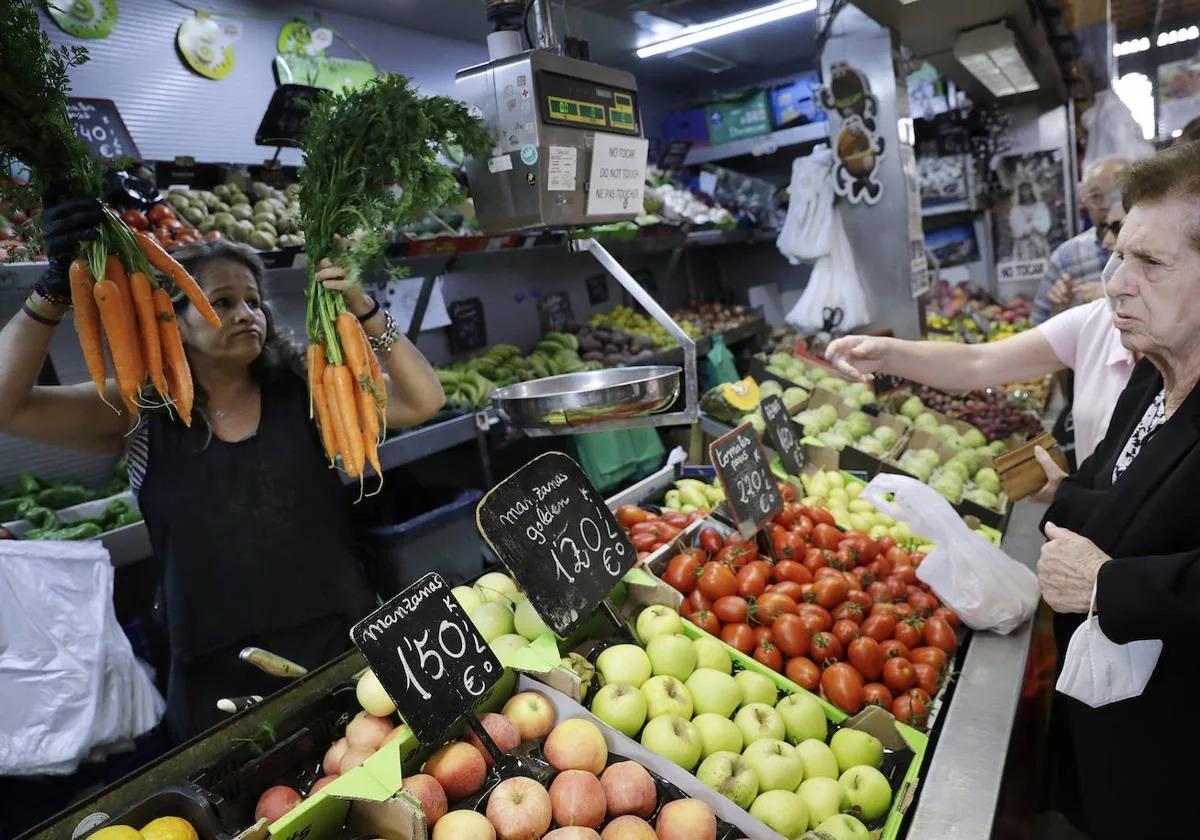Wages rise in Malaga, but by less than the cost of the shopping basket
In July, salaries covered by collective bargaining agreements rose by 2.6% in the province, compared to foodstuffs, which increased by 2.9% and the consumer price index, which grew by 3.4%
The rise in the price of the shopping basket has been easing month after month in Malaga province. Therefore, in July, its increase was limited to 2.9%, its slowest rate of increase since October 2021, when it rose by 1.5%. In between, food and non-alcoholic beverages have recorded double-digit increases, which reached 18.7% in February 2023, as a consequence of the economic effects of the Russian invasion of Ukraine. Since then, with some ups and downs, the trend has been towards moderation. And from being one of the main reasons why the consumer price index (CPI) was soaring, the shopping basket is now one of the components that is tempering it. Therefore, the CPI, the indicator that brings together the evolution of the prices of the goods most consumed by households, stood at 3.4% in the province in July, according to figures released this Tuesday by Spain's national statistics institute (INE). It represents a reduction of one tenth of a percentage point compared to 3.5% in June. The moderation in basic foodstuffs has been much more significant, falling from 3.7% in June to 2.9% in July.
In Malaga the shopping basket is becoming less expensive than in Spain as a whole. This has been the case for several months now. In July, the 2.9% increase in the province contrasts with the 3.1% national rate. But, apart from this component, in the overall price of goods consumed by households, the CPI, Malaga is once again out of line with the national figures, so that the 3.4% in Malaga contrasts with the 2.8% for Spain as a whole. For Spain as a whole, the CPI has gone from 3.4% in June to 2.8% in July.
Housing and its supply: the key
If it is not the shopping basket, what is it that keeps prices in Malaga rising at a faster rate than in Spain as a whole? The component in which there is the greatest difference between Malaga and the rest of the country is housing and its supply, which in the province has risen by 7.6% year-on-year, compared to 3.2% nationally, as a result of the rise in water, which is 14.5% year-on-year in Malaga. There is also a significant difference in the evolution of alcoholic beverages and tobacco, which in Malaga rose by 4.4%, compared to 3.7% nationally. And while restaurants and hotels recorded a rise of 5.1% in the province, in the country their rise is somewhat smaller and limited to 4.7%. In addition, leisure and culture prices rose by 2.2% in Malaga, compared to 1.6% nationally. Meanwhile, healthcare prices rose by 2.6% in Malaga and by six tenths of a percentage point less on average in Spain.
In any case, the CPI has also been moderating since the summer of 2022 when it rose by more than 10% in the province. It has done so with ups and downs, because since then there have been some months in which it has been below 3%.
Collective bargaining wages rise by 2.6%
But despite this easing of prices, especially for the most basic goods, food, wages continue to lose purchasing power. According to the latest statistics on collective agreements published by the Ministry of Labour and Social Economy for the month of July, the increase contained in the agreements signed in the province is 2.61%, a figure that drops to 2.43% in the case of company agreements.
This means that, with respect to the provincial CPI of July (3.4%), wages lose eight tenths of purchasing power, while with respect to the evolution of food and non-alcoholic beverages (2.9%) they lose three tenths.
The wage increase agreed by collective agreement in the province is in line with the Andalusian rate (2.65%), although it is somewhat below the national rate, which is close to 3%, a figure that does exceed the latest CPI figure at national level, which stood at 2.8% in July.
One year ago, in July 2023, the CPI was rising at a rate of 2.7% in the province and the wages agreed by agreement were up by 2.6%. At the national level, the Consumer Price Index advanced by 2.3% while the agreed wage increase was 3.34%.
The graph above shows how prices have evolved over the last decade and how wages have evolved. In the last four years, workers' salaries agreed between employers and trade unions have risen by less than the CPI. In the two previous years, in 2019 and 2020, characterised by very depressed prices due to the impact of the pandemic that paralysed the economy and the economic slowdown that preceded it, wage settlements grew more than prices. And in the previous four years there was a variety of situations. But the balance of the decade is that inflation has risen by six percentage points more than wages in the province.

